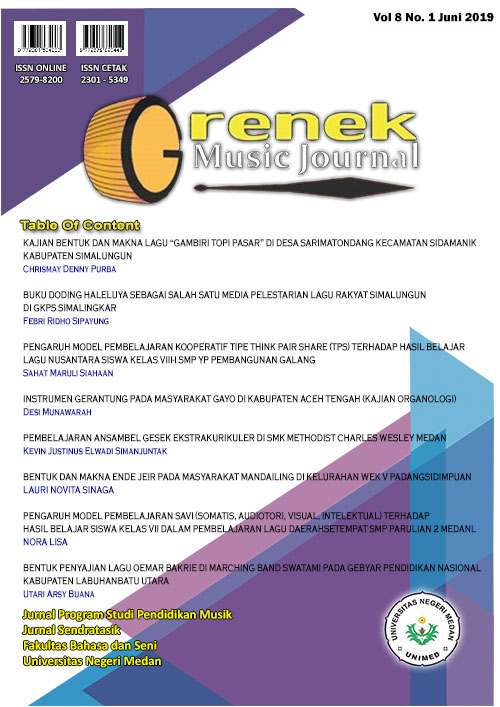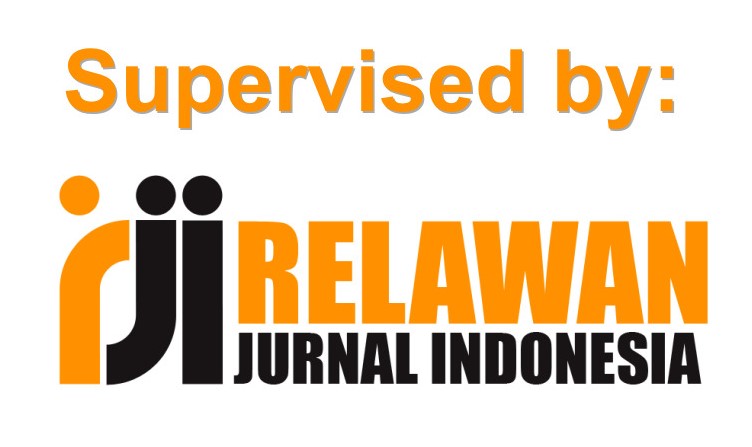KAJIAN FUNGSI DAN ORGANOLOGI ALAT MUSIK TEGANING PADA MASYARAKAT GAYOKECAMATAN BEBESEN KABUPATEN ACEH TENGAH
DOI:
https://doi.org/10.24114/grenek.v8i1.13130Keywords:
Organology, Function, TeganingAbstract
This study aims to discuss the selection of materials in making Teganing musicalinstruments, reviewed from the process of making Teganing, organological studies ofTeganing musical instruments, and reviewing the functions of Teganing musical instrumentsin the Gayo community in Bebesen District, Central Aceh Regency. The theories used in thisresearch are organology theory, musical instrument theory, Teganing theory, and musicfunction theory. This research was conducted on August to October 2018 on the streetPegasing Bebesen District, Central Aceh Regency. The method in this study is descriptivequalitative. The sample in this study amounted to two people, one artist and one Teganingcraftsman. Data collection techniques used were observation, interviews, and documentation.The results of this study explain that Gayo Teganing is made of bamboo (grind) Regen andrequires a long time for the manufacturing process. Teganing is a musical instrument playedby hitting it with a stick (Pegeul) on the string with the right hand and the left hand hittingthe Teganing body instead of repa'i or gegedem as a behavior. The production of GayoTeganing sound produced by the body of the tool itself is present in resonance (vibration)and also the quality of the bamboo used. Functions contained as emotional expressions,entertainment at various levels of socialism, symbolic representation, physical responsetools, reinforcement of social norm conformity, contribute to continuity and cultural stability,supporting social integration.Downloads
Published
2019-05-07
Issue
Section
Grenek Music Journal
License
Copyright (c) 2019 Angeline Trianita

This work is licensed under a Creative Commons Attribution-ShareAlike 4.0 International License.
Authors published with the Grenek: Jurnal Seni Musik agree to the following terms:
- Authors retain copyright and grant the journal the right of first publication with the work simultaneously licensed under a Creative Commons Attribution License (CC BY-SA 4.0) that allows others to share the work with an acknowledgment of the work's authorship and initial publication in this journal.
- Authors are able to enter into separate, additional contractual arrangements for the non-exclusive distribution of the journal's published version of the work (e.g., post it to an institutional repository or publish it in a book), with an acknowledgment of its initial publication in this journal.
- Authors are permitted and encouraged to post their work online (e.g., in institutional repositories or on their website) prior to and during the submission process, as it can lead to productive exchanges, as well as earlier and greater citation of published work. (See The Effect of Open Access)








